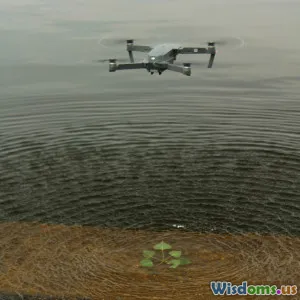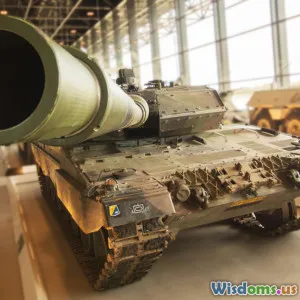
Virtual Warfare: The Next Frontier
6 min read Explore how virtual warfare is reshaping military strategy and technology, paving the way for innovative combat approaches in the digital age. (0 Reviews)
Virtual Warfare: The Next Frontier
In today's rapidly evolving military landscape, the concept of warfare is undergoing a significant transformation. Traditional combat methods are being redefined as technology advances, leading to the emergence of virtual warfare. This article explores how virtual warfare is reshaping military strategy, its implications for the future of combat, and the technologies driving this change.
Understanding Virtual Warfare
Virtual warfare refers to the use of digital technologies, simulations, and cyber capabilities to conduct military operations. Unlike conventional warfare, which often involves physical confrontations, virtual warfare operates in a digital realm, allowing for strategic operations without direct engagement. It encompasses a variety of technologies, including virtual reality (VR), augmented reality (AR), cyber warfare, and artificial intelligence (AI).
The Role of Simulation Technology
Simulation technology plays a pivotal role in virtual warfare. By creating realistic environments for training and strategic planning, military forces can prepare for various scenarios without the risks associated with real-world combat. For instance, the U.S. military has implemented advanced simulation systems like the Synthetic Training Environment (STE), which integrates live, virtual, and constructive training into a single platform. This allows soldiers to engage in complex scenarios and develop tactical skills efficiently.
Cyber Warfare: The New Battlefield
As nations increasingly rely on digital infrastructure, cyber warfare has emerged as a critical component of military strategy. Cyber attacks can disrupt communications, sabotage operations, and compromise national security without a single shot being fired. For example, the 2007 cyber attack on Estonia demonstrated the potential impact of cyber warfare on a nation’s critical infrastructure, leading to widespread chaos and economic disruption.
The Integration of Artificial Intelligence
Artificial Intelligence is at the forefront of modern military technology, enhancing decision-making processes and operational efficiency. AI can analyze vast amounts of data to identify patterns and predict potential threats, providing military leaders with valuable insights. One notable example is the use of AI in drone warfare, where autonomous systems can carry out reconnaissance and targeted strikes with minimal human intervention. However, the ethical implications of AI in warfare remain a topic of ongoing debate.
Benefits of Virtual Warfare
- Cost-Effectiveness: Virtual training reduces the need for extensive physical resources and can significantly lower training costs.
- Enhanced Readiness: Continuous training in virtual environments allows military personnel to remain prepared for real-world scenarios, improving overall readiness.
- Strategic Flexibility: The ability to conduct operations in a virtual realm allows for rapid adaptation to changing conditions and threats.
Challenges and Concerns
While virtual warfare presents numerous benefits, it also raises significant challenges. Cybersecurity threats, ethical concerns surrounding AI, and the potential for escalation in cyber conflicts must be addressed. The reliance on technology also introduces vulnerabilities, as adversaries may seek to exploit weaknesses in digital systems.
The Future of Warfare
The future of military engagement will likely see an increased reliance on virtual warfare and digital technologies. As nations invest in developing their cyber capabilities and simulation technologies, the nature of conflict may shift towards a more hybrid model, integrating both virtual and physical elements. Countries like China and Russia are already prioritizing their cyber warfare capabilities, indicating a global trend towards the militarization of cyberspace.
Conclusion
Virtual warfare is indeed the next frontier in military strategy. As technology continues to evolve, the implications for how wars are fought will become increasingly complex. Understanding and adapting to these changes will be crucial for military leaders and policymakers alike. The effective integration of virtual warfare technologies can enhance national security, but it also necessitates a thoughtful approach to ethical considerations and international norms as we navigate this new battlefield.
By embracing the opportunities presented by virtual warfare, nations can not only improve their defensive capabilities but also ensure a more secure and stable global environment in the face of evolving threats.
Rate the Post
User Reviews
Popular Posts




















